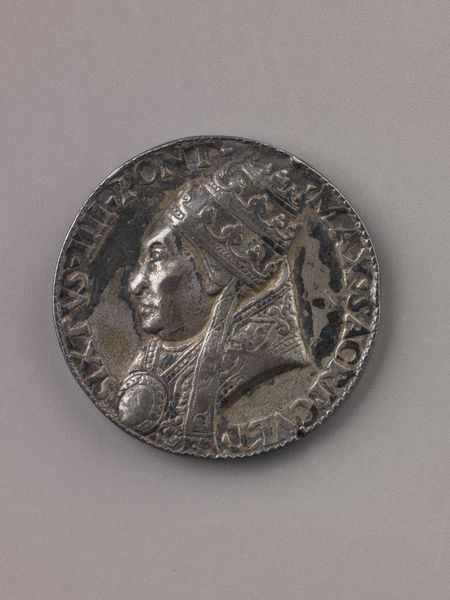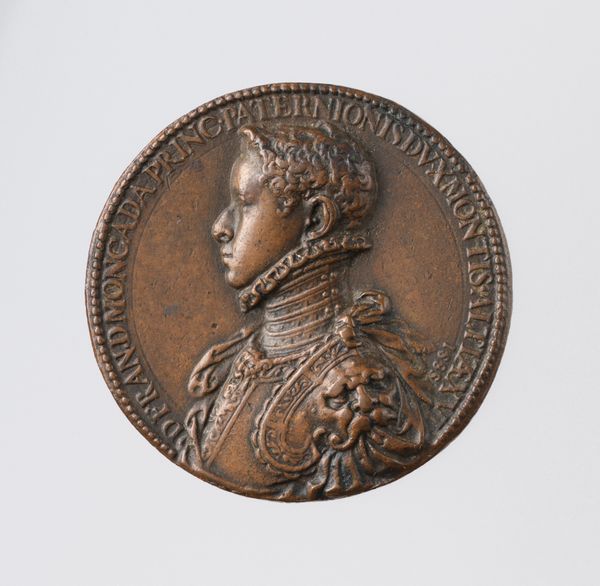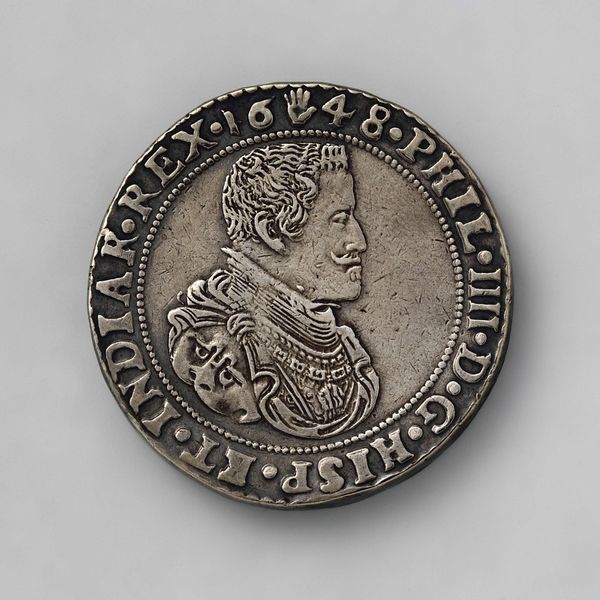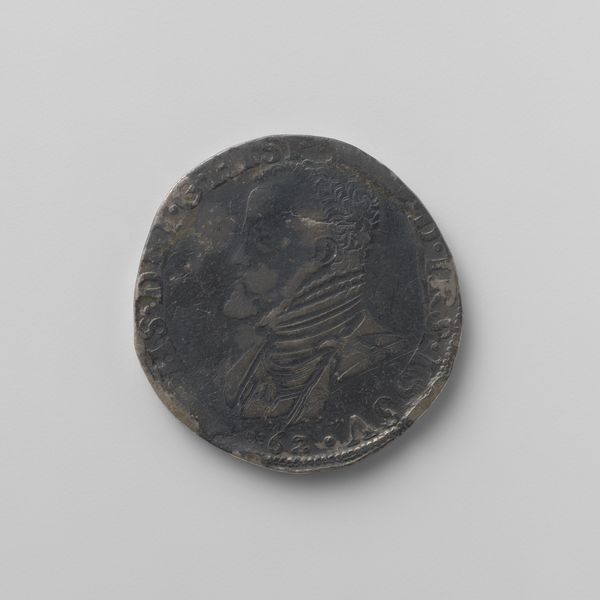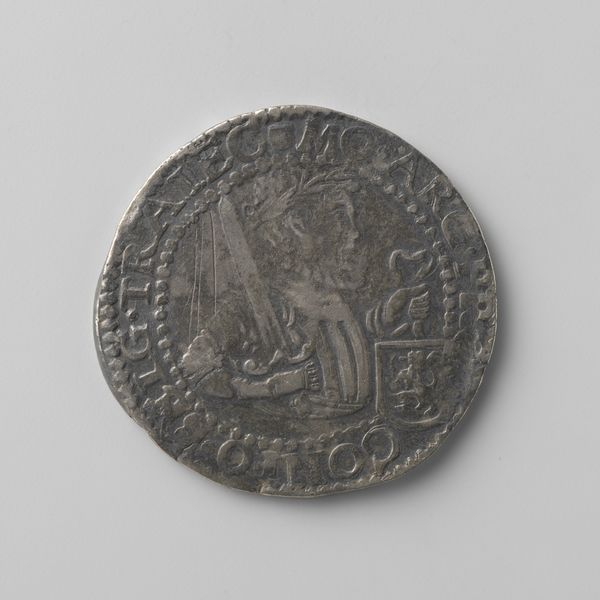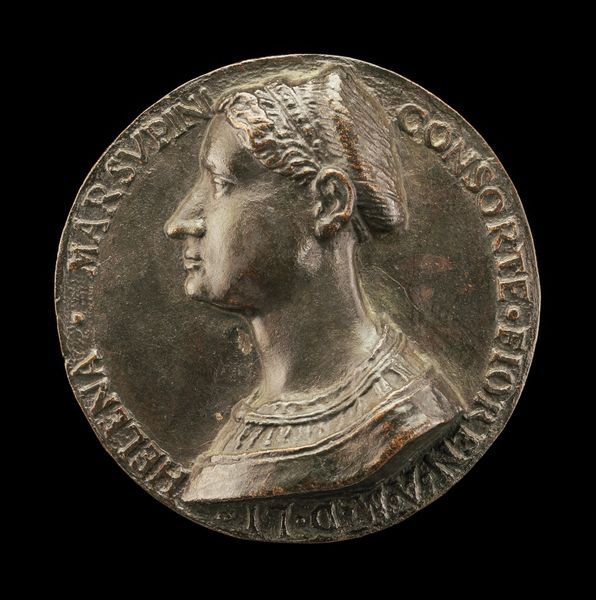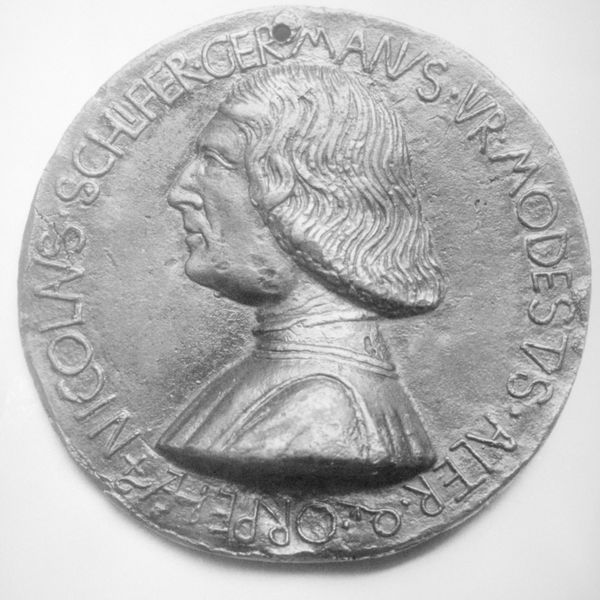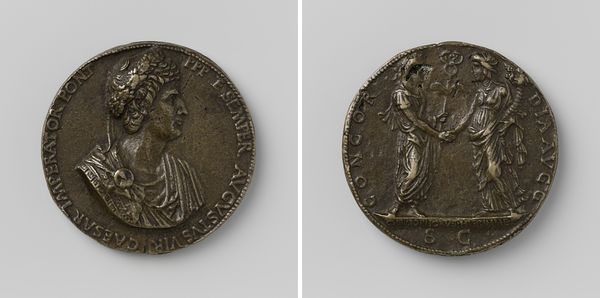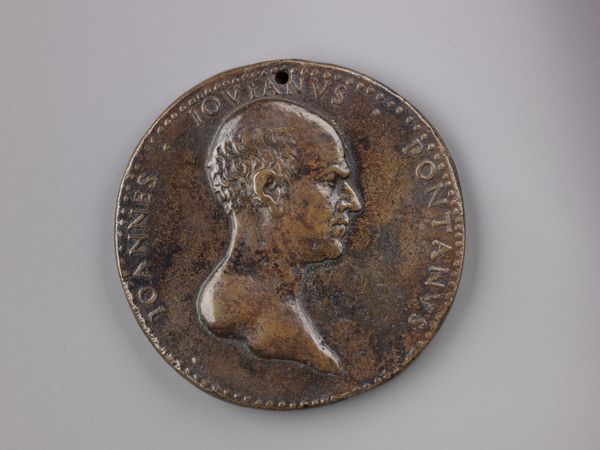
bronze, sculpture
#
portrait
#
sculpture
#
bronze
#
geometric
#
sculpture
#
italian-renaissance
Dimensions: diameter 6.7 cm, weight 149 gr
Copyright: Rijks Museum: Open Domain
Curator: Let's discuss this beautiful bronze roundel currently housed at the Rijksmuseum, a portrait of "Leonello d'Este" sculpted by Pisanello sometime between 1441 and 1444. Editor: The somber color of the bronze gives this piece an austere gravity, don't you think? The light catches so elegantly on the high relief of the portrait, framing his profile. Curator: Absolutely. The portrait immortalizes Leonello d'Este, an important figure in Renaissance Ferrara known for his patronage of the arts and humanistic pursuits. The geometric precision speaks to Renaissance ideals of order, while his serene gaze suggests enlightened rule. Editor: Yes, there’s something incredibly controlled in the way Pisanello balances the text inscriptions with the image. I think it amplifies the air of measured authority you’re describing. How does it speak to you on a broader cultural level? Curator: Well, these portrait medals, inspired by ancient coins, emerged as powerful tools for constructing and disseminating images of powerful men. This piece performs exactly that role, asserting Este's place within a classical lineage of leadership. Further, these objects moved widely throughout courts. Este’s portrait circulated ideas of leadership and courtly culture. The portrait offers insight into identity, legacy, and political representation in Renaissance Italy. Editor: Considering it as a vehicle of identity clarifies the meticulous attention given to rendering his features. You note the circulation—so, each precise detail works to underscore the sitter’s status, acting almost like an emblem to communicate wealth, lineage, and, of course, power. Curator: Exactly, the very material of bronze evokes Roman imperial power and links Este to those traditions. Editor: It’s been wonderful to analyze the semiotics of Pisanello’s artwork! I will leave with a renewed perspective on geometric harmony. Curator: For me, it's reaffirmed the potency art possesses to influence and negotiate identity and societal norms during this era.
Comments
No comments
Be the first to comment and join the conversation on the ultimate creative platform.
